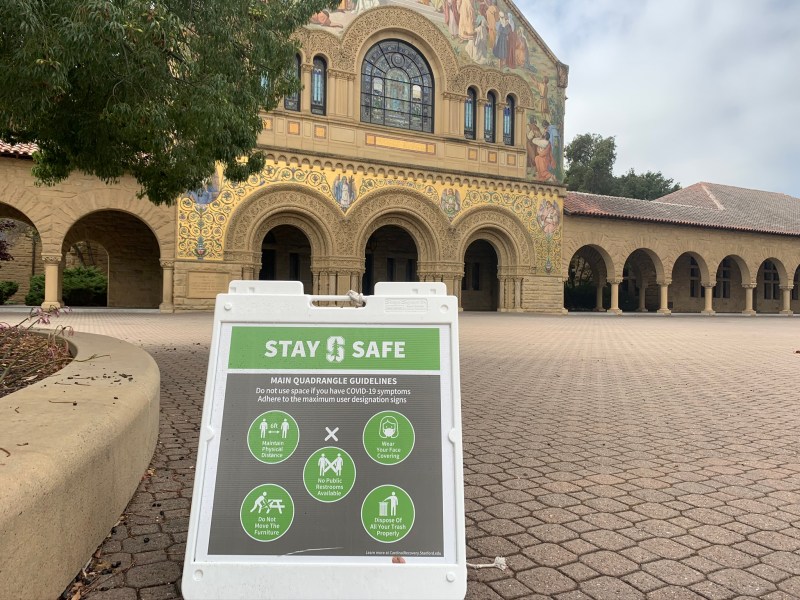Stanford is proceeding with plans to invite first-years and sophomores to campus during the winter quarter, Provost Persis Drell announced in an email to the community on Monday. The University will offer on-campus housing to frosh and sophomore cohorts and continue to operate in a hybrid learning model for the winter quarter, with only a small number of classes held in-person.
The announcement comes as Santa Clara County officials sounded the alarm on rising COVID-19 cases on Monday. Santa Clara County reported 358 new COVID-19 cases on Sunday, which is the county’s second highest daily case total since the start of the pandemic.
Drell wrote that if conditions worsen and prevent Stanford from hosting frosh and sophomores, the University will notify students by Dec. 14, before administrative offices close for winter break. She also encouraged students to make refundable travel plans, “just in case.”
For now, Drell wrote, “The indications currently are that we will be able to proceed with this plan,” citing low prevalence rates of COVID-19 at Stanford, which is conducting expansive surveillance testing. As of Nov. 9, Stanford reported a student COVID-19 positivity rate of 0.09%, with a total of 50 positive tests among students. Stanford’s positivity rate is lower than Santa Clara County’s positivity rate of 2.81% and the state’s positivity rate of 4.89%.
Stanford had initially planned for first-years, sophomores and transfer students to live on campus in the fall quarter, but later suspended its plans just weeks before the start of the quarter. The University first announced in August that, conditions permitting, first-years and sophomores would be welcomed to campus in the winter.
“This surge in COVID-19 cases is not what we want to see going into the fall and winter season,” Sara Cody ’85, the county’s public health officer, said in a press release. While the county remains in the “orange” risk tier, county officials warned that failure to adhere to health measures could mean the county is recategorized into a higher risk tier, which could restrict Stanford’s ability to welcome students at the start of winter quarter.
University spokesperson E.J. Miranda told The Daily that “principal factors that could lead to a change would be significant changes in prevalence rates here on campus and in our surrounding community, and significant changes in the state and local public health requirements that apply to Stanford.” Miranda added that Stanford is closely monitoring the county’s rising case count, which could “necessitate a change in our approach.” Drell noted that regardless of the health conditions, students with special circumstances approved to live on campus will be accommodated.
More limitations on campus life will be in place at the start of the quarter and may be lessened if conditions permit. The provost announced that the University will prohibit all in-person gatherings and require instruction to be remote for the first two weeks of the quarter. If conditions allow, households may form after the two-week period. While University policy currently limits in-person gatherings, Drell wrote that Stanford will slowly provide more flexibility for such gatherings, beginning with University activities and later expanding to student organization activities.
Lessening of restrictions is contingent on public health conditions and Stanford community members’ compliance with health protocols, which has not been 100% this quarter, Drell wrote. An analysis by The Daily found that 19% of students may not have been in compliance with Stanford’s testing policy. At the beginning of the winter quarter, Stanford will require COVID-19 testing for students twice a week, a policy that could be relaxed as the quarter progresses.
The University will also allow lab classes and other courses that cannot reasonably be held remotely to meet in-person. Labs and classrooms will be reconfigured to allow for social distancing.
Contact Cameron Ehsan at cehsan ‘at’ stanford.edu.
